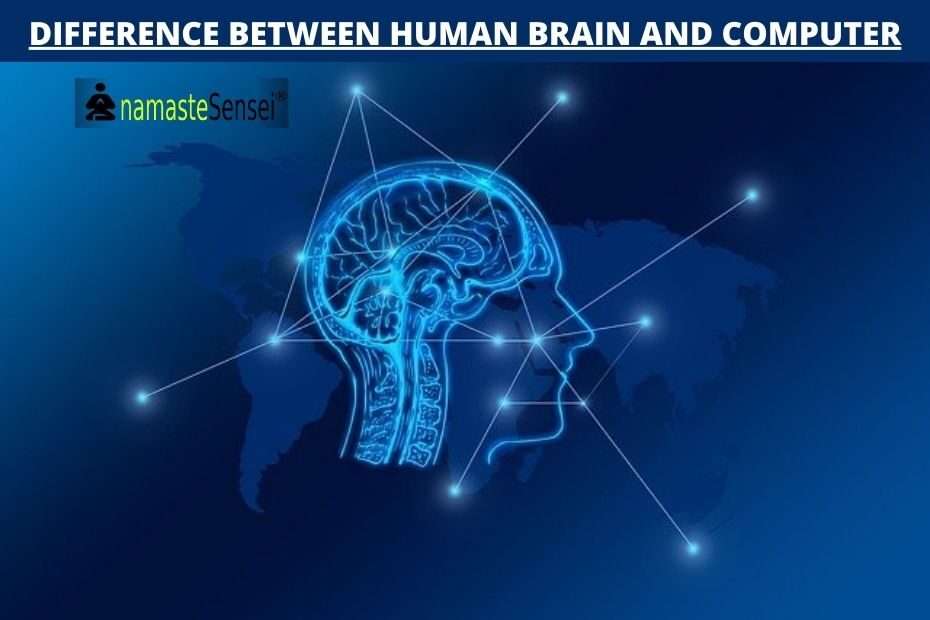Advertisements
Difference Between Human Brain and Computer – Psychology
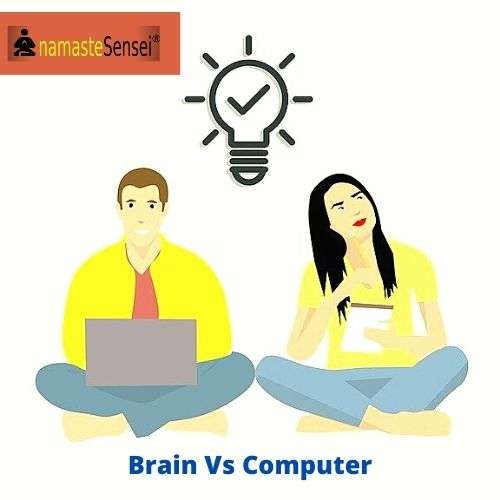
Difference Between Human Brain And Computer
- Both Human Brain and computer can receive information, enter it into storage (memory), and retrieve it at a later time. Though there are similarities between human brain and computer. But computers and the human brain are different in a fundamental way.
- Modern computers are serial devices: They work on information one step at a time. In contrast, our brains appear to process information in a parallel fashion; this means that many modules—collections of interconnected neurons—process information in different ways simultaneously.
- These modules may be scattered at widely different locations in the brain. Moreover, each may work on a different aspect of a task. The more complex the task, the greater the number of modules that are called into operation. The result is that even very complex tasks can be handled very quickly because different aspects of them are performed at the same time.
- In contrast, a computer proceeds serially, working one step at a time, and this can result in slower performance, especially for complex tasks.
Human Brain vs Computer – Serial versus Parallel Processing
Watch Below Video For brief understanding of difference between human brain and computer.
- In serial processing, tasks are performed one step at a time, in sequence. In parallel processing, in contrast, tasks are divided into subtasks, and all of these are performed simultaneously.
- Growing evidence suggests that our brains function through parallel processing, in which separate modules (collections of interconnected neurons) work on various parts of a task simultaneously.
Parallel and Serial Processing in Human brain and computer (Visual Perception)
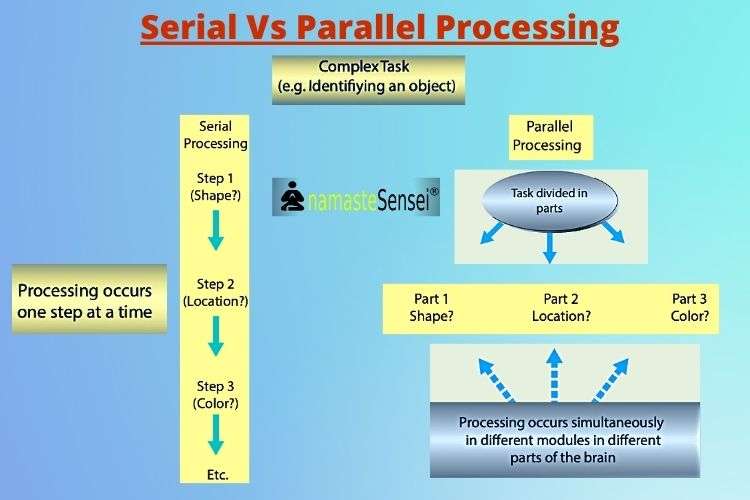
Advertisements
- As a concrete illustration of this difference, let’s consider visual perception. We could readily program modern computers to differentiate between simple shapes such as triangles and squares. How would the computer do this?
- If we started with a drawing of, for instance, a triangle, this could be scanned by an input device (e.g., a scanner). The computer (really, its program) would then use this information to calculate the location of each line in the drawing, the angles between lines, and so on. It would then compare this information to definitions of “triangle” and “square” previously entered into its memory (or the program) and would classify each figure as a “triangle” or “square” depending on how closely it matched these definitions.
- So far so good. But what if we wanted the computer to recognize human faces? The program for this task would be truly immense, and step-by-step serial processing might take a long time indeed.
- In contrast, because our brains employ parallel processing by large numbers of modules, we can handle this task with ease. While computers take much longer to recognize complex patterns, human beings do not. So the fact that our brains act as parallel processors is a big advantage.
How information is processed parallelly in our Human brain?
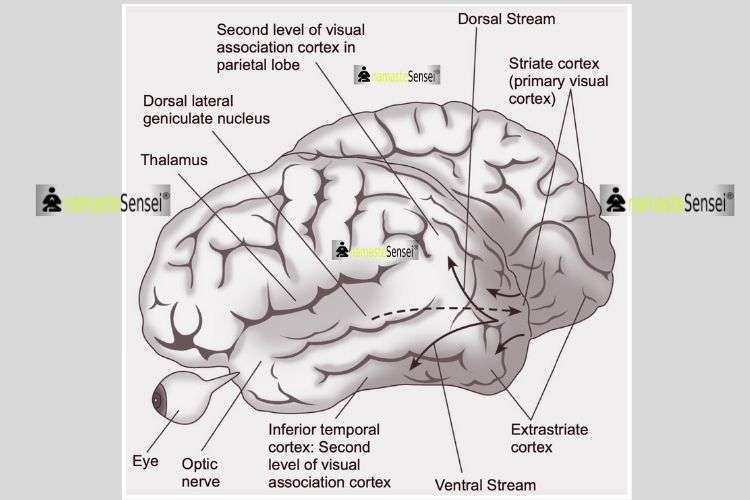
- As humans, we are largely visual creatures, and this means that when we look around us, we can readily recognize that there are vast numbers of objects, can tell where they are in space, and use this information to react to them (e.g., pick them up or get out of their way!).
- How do we do this so fast and effortlessly? Parallel processing provides part of the answer. It seems that from the level of our eyes up, we have cells specialized for performing different functions—for examining different aspects of the visual world.
For example, various cells (or modules) respond to new objects we have not previously seen rather than to ones with which we are very familiar. Perhaps even more surprising, we seem to possess different systems for replying to what an object is and for determining where it is and how we can deal with it (reach for or touch it). - Research findings indicate that information from our eyes arrives at the extrastriate cortex and from there divides into two separate streams. One stream (ventral) carries information downward to part of the temporal lobe; such information is concerned with where an object is or how we can react to it physically. The other stream (dorsal) moves upward to areas in the parietal lobe; such information is concerned primarily with identifying what the object is (refer to image above). Because both types of processing occur at once (in parallel) we can analyze visual information and respond to the information received very quickly.
Distributed Human Neural System for Face Perception
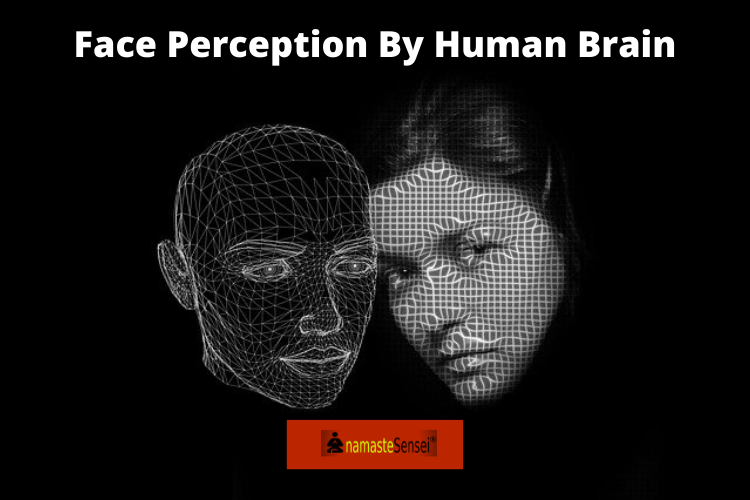
- A study by Haxby and his colleagues (1994) provides clear evidence for this difference. Participants were shown either a human face or a random pattern, and then a second face or pattern. In a form discrimination task, they had to indicate whether the second stimulus was the same as the first they had seen.
- In a location task, they had to indicate whether the second stimulus was shown in the same place as the first (the location could vary). PET scans of participants’ brains indicated that activity in the extrastriate cortex increased for both tasks, but the discrimination task increased activity in the ventral stream (refer to above image), while the location task increased activity in the dorsal stream (refer to above image). Under normal conditions, processing occurs in both streams simultaneously—thus enabling us to recognize and react to different faces or objects very quickly.
Example
- Suppose, for instance, that someone throws something at you and shouts “Catch!” You have only a split second to identify the object and react; yet the chances are good that you will reach out your hand if it is something safe and acceptable (e.g., a tennis ball) but will jump out of the way if it is something less desirable—a sharp object or a messy one. Your ability to do this is a good illustration of the advantages of parallel processing; such processing allows us to recognize objects, their location in space, their movement, and other features with amazing speed.
You can read more about Haxby and his colleagues (1994) study in this linked article.
Recommended Read – DISTRIBUTED HUMAN NEURAL SYSTEM FOR FACE PERCEPTION
More Articles
| How To Convince Someone To Do Something? | Face Perception By Human Brain |
Any topic you want us to cover. Let us know.
Advertisements
